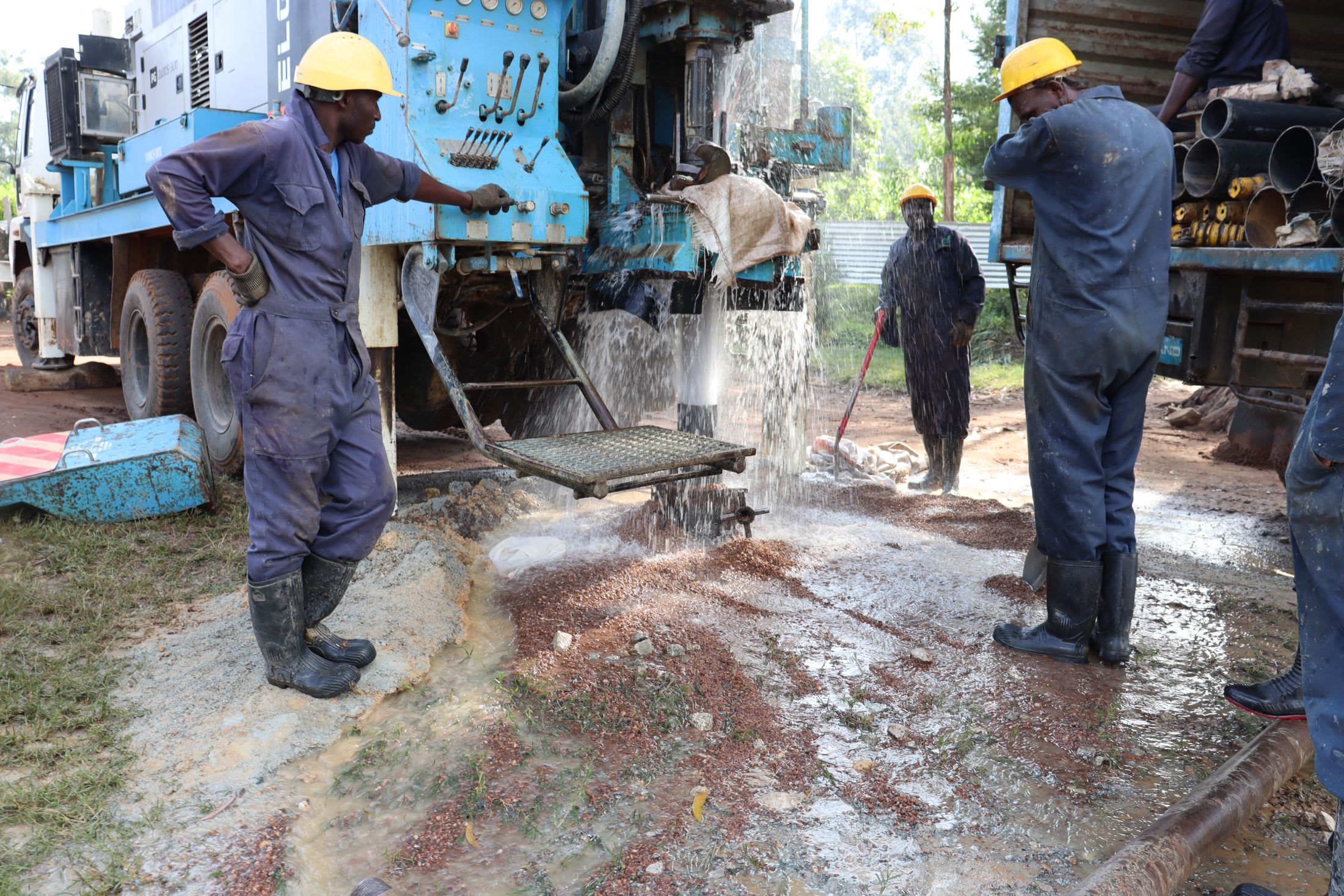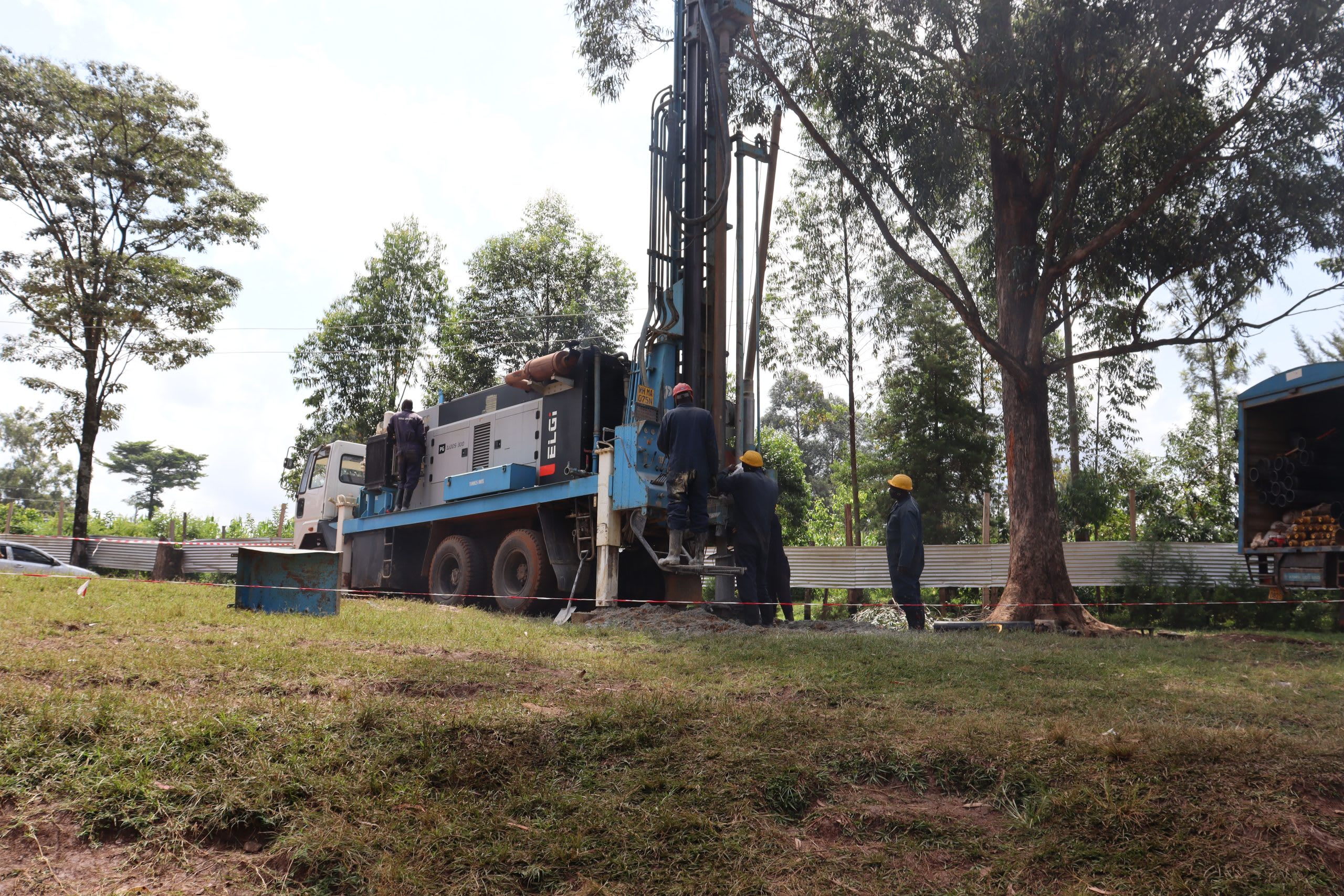The 515 students at St. Gerald Sasala Primary School, one of the top primary schools in Kakamega County, spend much of their day collecting and carrying water, which is exhausting instead of learning.
The school has a seasonal protected dug well that has difficulty keeping up with such a large population, especially during the dry season when the water table is low. Inevitably, the well goes dry, and students are forced to bring water from home. It doesn't matter if students want the burden of carrying heavy water containers to school. It is expected of them.

Thedaus.
"The current water situation affects me a lot. On the other hand, I was beaten by the teacher on duty because of coming late to school after I had gone to look for water to carry to school," said 12-year-old student Thedaus.
Collecting water in the morning before school makes students late, and sadly, the water they bring with them is questionable at best because they collect it wherever they can find a pool of water. Often, that means the closer and quicker the collection, regardless of the source, is where students fill their containers. One container of contaminated water is all it takes to taint the whole, so consuming this water from unknown sources is risky for everyone.
"The water brought from various sources is not safe for human consumption. Most of the pupils are found with typhoid and stomach ache, which makes them miss some lessons. On the other hand, the cost of treatment and medication is high. When the pupils miss some lessons, it affects the performance of pupils individually and collectively lowers the ranking of the school," reported field officer Mary Afandi.

"When the water is finished, which the pupils carry from home, it forces them to come out of their classes and go look for water outside the school. This break from their lessons interferes with their studies and causes them to drop in their performance academically," continued Mary.

When the water in the well and what students brought with them in the morning runs out, they must walk to an overcrowded community spring (see above) that is in disrepair to collect more, even amidst their school day. All this time outside the classroom is detrimental to everyone because it steals the time and energy needed for learning.
"Personally, I have been affected a lot because I can't finish my syllabus on time or lessons because looking [for] water [in the] daytime interferes with my lessons," said 36-year-old headteacher Mary Asenwa.

Teacher Mary at the spring.
Installing a borehole well will enable students like Thedaus and teachers like Mary to access water whenever needed throughout the year, right outside their classrooms, instead of wasting valuable learning time. Hopefully, in a short time, consuming clean water will give everyone the energy and health they need to focus on learning instead of battling water-related illnesses.
Water at schools is unique, which is why we need unique solutions.
The Proposed Solution, Determined Together...
At The Water Project, everyone has a part in conversations and solutions. We operate in transparency, believing it benefits everyone. We expect reliability from one another as well as our water solutions. Everyone involved makes this possible through hard work and dedication.
In a joint discovery process, community members determine their most advantageous water solution alongside our technical experts. Read more specifics about this solution on the What We're Building tab of this project page. Then, community members lend their support by collecting needed construction materials (sometimes for months ahead of time!), providing labor alongside our artisans, sheltering and feeding the builders, and supplying additional resources.
Water Access for Everyone
This water project is one piece in a large puzzle. In Kenya, Sierra Leone, and Uganda, we're working toward complete coverage of reliable, maintained water sources that guarantee public access now and in the future within a 30-minute round trip for each community, household, school, and health center. One day, we hope to report that this has been achieved!
Training on Health, Hygiene & More
With the community's input, we've identified topics where training will increase positive health outcomes at personal, household, and community levels. We'll coordinate with them to find the best training date. Some examples of what we train communities on are:
- Improved hygiene, health, and sanitation habits
- Safe water handling, storage & treatment
- Disease prevention and proper handwashing
- Income-generation
- Community leadership, governance, & election of a water committee
- Operation and maintenance of the water point
Handwashing Stations
Alongside each water source, we also provide two new gravity-fed handwashing stations that will allow everyone at the school to wash their hands without running water. Handwashing is so important to help prevent future water-related illnesses in the school community.
The student health club will maintain the stations, fill them with water, and supply them with soap (which we will teach the school community how to make during the training!).
VIP Latrines
In addition, we will construct two triple-door Ventilated Improved Pit (VIP) latrine blocks designed to prevent fecal disease transmission. Each latrine will have a cement floor, which is easy to use and clean regularly. Three doors will serve the girls, and three doors will serve the boys.

 Borehole Well and Hand Pump
Borehole Well and Hand Pump
 Rehabilitation Project
Rehabilitation Project

































